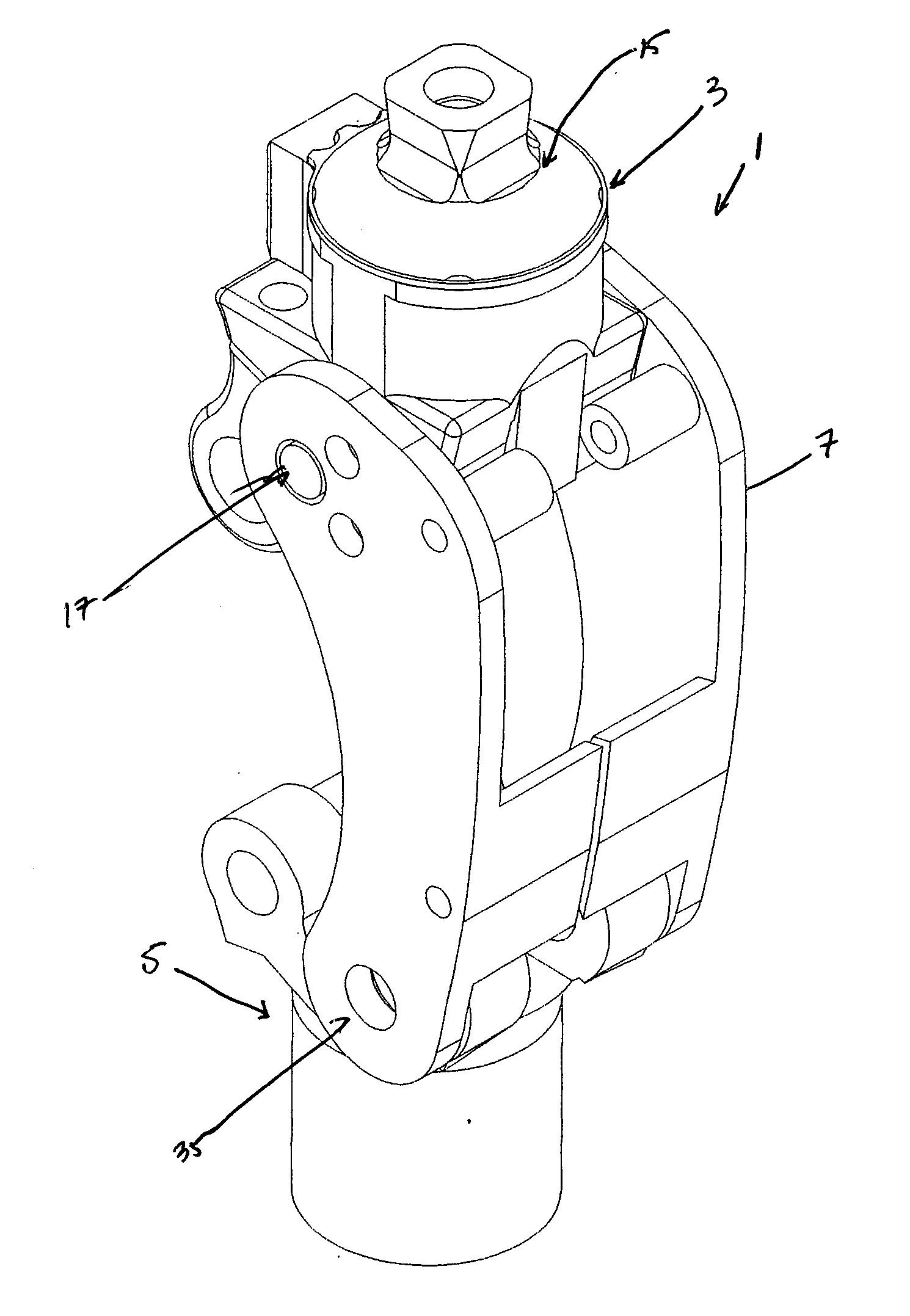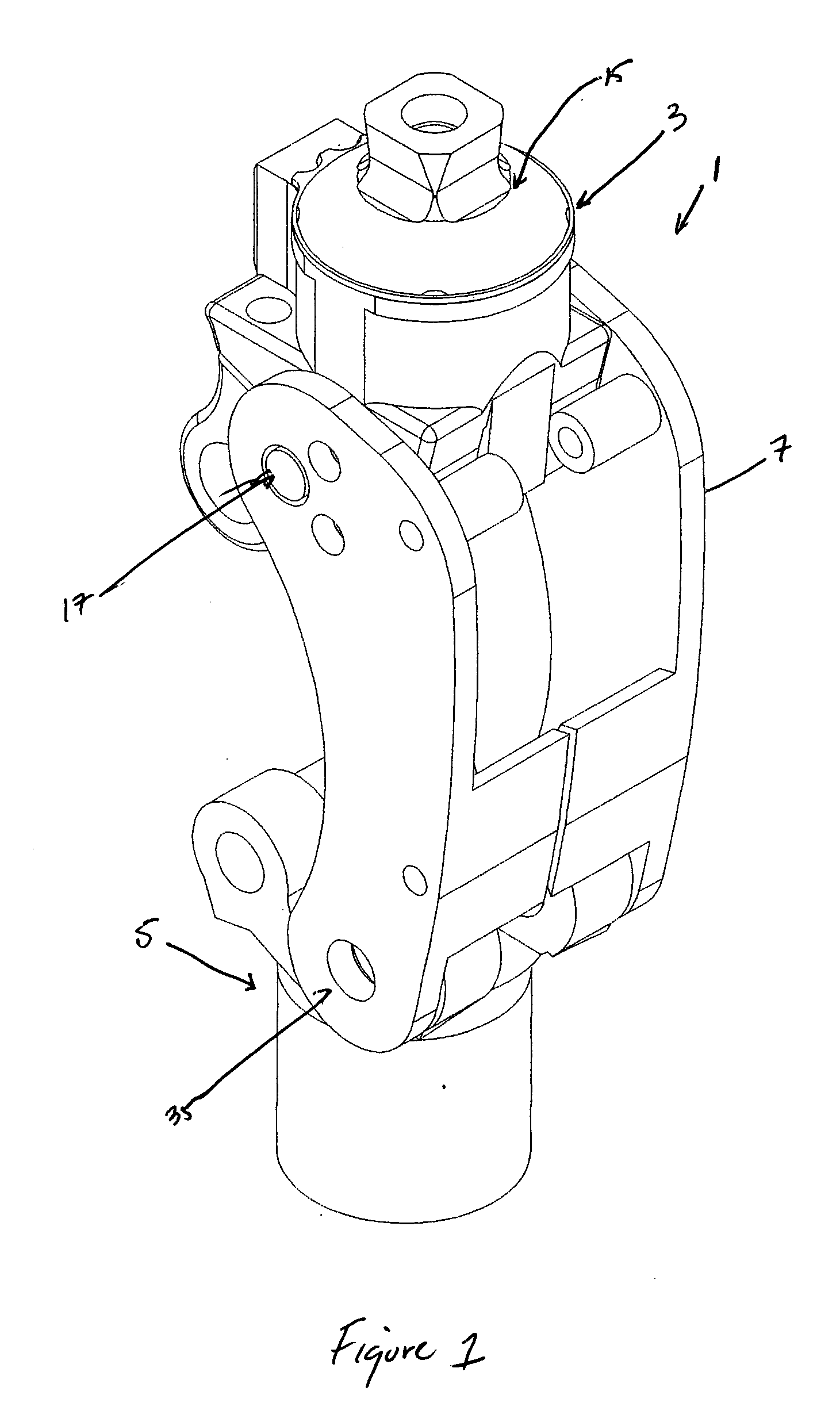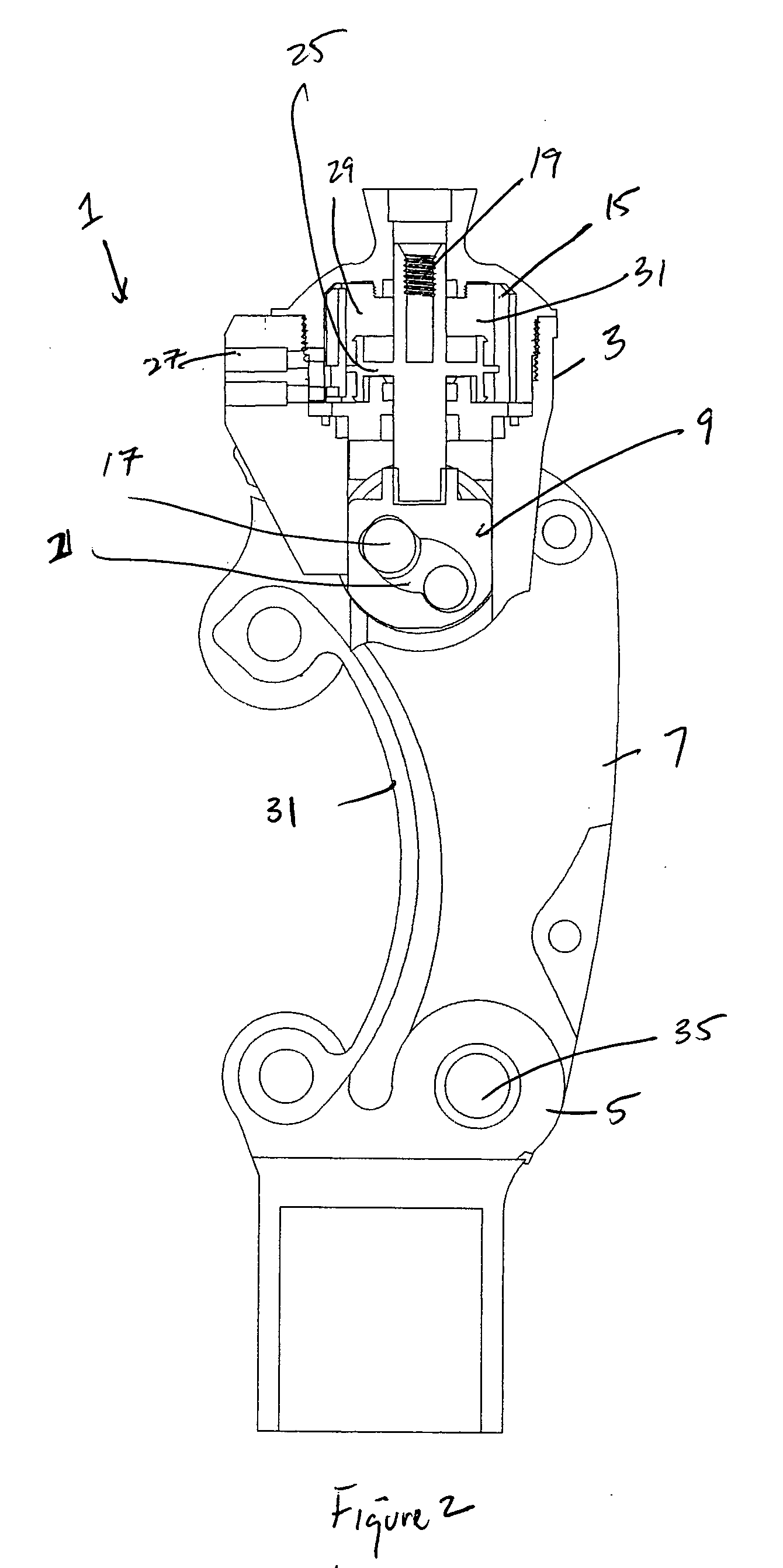Prosthetic knee mechanism
a technology of prosthetic knees and knee joints, applied in the field of prosthetic knees, can solve the problems of difficult duplicate of human leg aspects, limbs that do not create the real movement of human limbs, and the designers of prosthetic knees have faced very difficult challenges, so as to and increase stance phase stability
- Summary
- Abstract
- Description
- Claims
- Application Information
AI Technical Summary
Benefits of technology
Problems solved by technology
Method used
Image
Examples
Embodiment Construction
[0081] The present invention relates to a prosthetic knee that improves stability and flexion of a user during use. The mechanism has a braking mechanism to increase stance phase stability in a polycentric knee. Additionally, the knee uses a cam mechanism to control the flexion and extension of the knee. Moreover, the prosthetic knee uses a collapsible posterior linkage which allows the knee a small degree of flexion at heel strike while maintaining overall knee stability.
[0082] As illustrated in FIG. 1, the present invention generally relates to a prosthetic knee mechanism 1 having an upper portion 3 and a lower portion 5.
[0083] The upper portion 3 may connect to, and / or form part of the thigh component of a prosthesis. The lower portion 5 may connect to, and / or form part of the lower leg system of a prosthesis. A connection means and / or anterior linkage 7 may be positioned between the upper portion 3 and the lower portion 5. The anterior linkage 7 and / or connection means may con...
PUM
 Login to View More
Login to View More Abstract
Description
Claims
Application Information
 Login to View More
Login to View More - R&D
- Intellectual Property
- Life Sciences
- Materials
- Tech Scout
- Unparalleled Data Quality
- Higher Quality Content
- 60% Fewer Hallucinations
Browse by: Latest US Patents, China's latest patents, Technical Efficacy Thesaurus, Application Domain, Technology Topic, Popular Technical Reports.
© 2025 PatSnap. All rights reserved.Legal|Privacy policy|Modern Slavery Act Transparency Statement|Sitemap|About US| Contact US: help@patsnap.com



